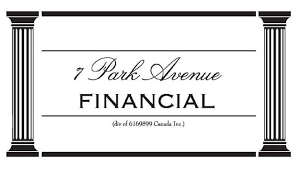|
Maximize Business's Liquidity: Smart Working Capital Funding Solutions
Revolutionize Your Cash Flow: Insights into Working Capital Financing
YOU WANT INFO ON WORKING CAPITAL FUNDING AND A WORKING CAPITAL FACILITY THAT WORKS FOR YOUR COMPANY!
The Art of Cash Flow: Strategies for Effective Working Capital
You've arrived at the right address! Welcome to 7 Park Avenue Financial
Financing & Cash flow are the biggest issues facing business today
ARE YOU UNAWARE OR DISSATISFIED WITH YOUR CURRENT BUSINESS FINANCING OPTIONS?
CALL NOW - DIRECT LINE - 416 319 5769 - Let's talk or arrange a meeting to discuss your needs
Or Email us with any questions on Canadian Business Financing
EMAIL - sprokop@7parkavenuefinancial.com

"Mastering the art of working capital management is the cornerstone of financial success for every Canadian business, determining its ability to thrive in a rapidly evolving economic landscape."
Mastering Working Capital Management for Business Success
Introduction to Working Capital Funding
In Canadian business, the vitality of a company hinges significantly on its mastery of working capital finance management.
Whether it's through skillful negotiations with suppliers, leveraging assets like receivables and inventory, or exploring various financing options like bank lines of credit, asset-based lending, or factoring, Canadian businesses are continually navigating the intricate dance of maintaining healthy cash flow and financial stability for the company's liquidity.
Every Canadian business owner and financial manager wants to know that their firm has financial health in the short term. Your company's ability to access working capital funding means only one simple thing - you can pay off your short-term liabilities such as accounts payable, taxes, source deductions, etc.
Assessing the Need for Improved Working Capital
So do you in fact need a better type or working capital facility today, and, if so, what are your options? We can't cure the patient unless we can confirm he is sick... so how in fact do you determine if that working capital need exists? It could not be simpler. Go to your balance sheet, add up cash, receivables and inventory, and if they in total don’t cover your accounts payable, guess what...? The patient has a problem.
Recognizing Cash Flow Challenges
Two points worth mentioning, we fully realize the most successful business managers and owners know intuitively that they have a challenge in the area of cash flow.
It's simply recognizing that on a day-to-day basis more and more time is devoted to working capital management - i.e., collections, invoicing, juggling payables, etc.
Internal Solutions for Cash Flow Improvement
There are very specific cash flow solutions for your working capital funding requirements. But believe it or not many of them can be fixed internally. Your ability to negotiate better terms with your suppliers is a critical cash flow factor. More importantly, many business owners don’t focus on the turnover and quality of their current assets such as receivables and inventory.
Enhancing Asset Management for Better Cash Flow
By effectively measuring and monitoring your turnover in receivables and inventory can significantly improve cash flow. Technically we're talking about reducing day’s sales outstanding and calculating inventory turnover. Your goal is to reduce the amount of time it takes for a dollar to flow through your company.
Identifying Solutions for Working Capital Issues
So we have identified the problem, and the measurement issues around that problem, let’s focus on solutions.
Ideal Working Capital Financing Solutions
In a perfect world, and we know it's not, your Canadian chartered bank would be financing all your receivables and inventory on an ongoing basis, and when you need it to offer up a bulge type facility to take you through a working capital rough patch. That type of working capital facility is generally referred to as a business operating line of credit.
Real-World Working Capital Alternatives
As we said, it’s not a perfect world apparently! ... And thousands of firms, perhaps yours, don’t have access to this type of facility.
So the Canadian marketplace offers up a number of solutions, for medium-sized and larger firms the alternative is an asset-based line of credit that comes without the restrictions of a bank facility (ratios, covenants, outside collateral, etc.) but in fact, provides you with more working capital than a bank could.
For smaller firms, a working capital facility term loan is available via a government-related bank in Canada. For smaller and medium-sized firms' receivable financing facilities, known as factoring, can turn your receivables into a constant ATM machine, albeit at a higher cost.
Key Takeaways
-
Importance of Cash Flow: Effective working capital management centers around maintaining a steady flow of cash. Businesses need to ensure they have enough liquid assets to meet short-term expenses. This is crucial for avoiding financial crunches.
-
Inventory Management: Efficiently managing inventory is vital. Excess stock ties up funds, while too little can halt sales. Striking a balance ensures cash is not unnecessarily tied up in unsold goods.
-
Accounts Receivable: Companies must manage the time it takes for customers to pay for goods or services. Shorter payment terms and efficient collection processes improve cash availability.
-
Access to Credit: Understanding different financing options, such as lines of credit, loans, or factoring, is essential. These tools can bridge gaps when incoming cash is less than outgoing expenses. Asset based loan solutions secure a company's assets
Conclusion: Revitalizing Your Business with the Right Working Capital Facility
Despite popular belief, traditional banking solutions are often not the most effective means for managing working capital; in fact, many businesses could benefit more from alternative financing methods that are frequently overlooked due to a lack of awareness and understanding
So what's our bottom line? Simply the right working capital facility will put life back into the patient, your company!
Knowing what facility works best, what your options are, etc. is really the only challenge.
Call 7 Park Avenue Financial, a trusted, credible and experienced Canadian business financing advisor to guide you through to the right cash flow solution.
FAQ
What is working capital funding?
Working capital funding refers to financing aimed at managing a company's short-term operational needs, ensuring it has sufficient cash flow to cover immediate expenses like inventory, payroll, and debts.
Why is working capital important for a business?
It's crucial for maintaining smooth operations, ensuring a business can meet its short-term liabilities and expenses without facing cash flow disruptions.
How can working capital funding benefit a business?
Positive working capital provides financial flexibility, helps in maintaining a healthy cash flow, and ensures the business can capitalize on growth opportunities without financial strain on the financial obligations of the business
What are some common types of working capital funding?
These include lines of credit, short-term loans, invoice factoring, merchant cash advances, and business credit cards, each offering unique benefits depending on the business's needs.
How does effective working capital management impact a business's growth?
By effectively managing working capital, a business can avoid liquidity issues, invest in growth opportunities, and maintain a competitive edge while achieving short term financial health
Can small businesses benefit from working capital funding?
Absolutely. Small businesses often find working capital funding essential for bridging gaps in cash flow in the company's current assets such as a/r and inventories, especially during growth phases or seasonal sales fluctuations.
Is working capital funding a good option for startups?
Yes, startups can leverage working capital funding to cover operational costs while building their customer base and revenue streams to achieve positive net working capital to offset what might be a lower asset base on the company's balance sheet as they fund everyday operations
How do interest rates affect working capital loans?
Higher interest rates increase the cost of borrowing, impacting a company's profitability. It's crucial to negotiate favourable rates for cost-effective financing - The aspect of a business owner's personal credit is also important as well as a positive working capital ratio which measures the relationship between short term assets and short term liabilities - The merchant cash advance/short term working capital loan is easy to secure but comes at a higher interest rate
Can working capital funding be used for equipment purchases?
Generally, working capital loans are intended for short-term expenses. Equipment purchases are often financed through long-term loans or specific equipment financing when a company wants to secure financing for long term assets / fixed assets
What role do investors play in providing working capital?
Investors can infuse capital into a business, increasing its working capital. This funding is typically in exchange for equity ownership or future repayment with interest via a working capital loan structure with an equity component
How does inventory management affect working capital?
Effective inventory management ensures that funds are not unnecessarily tied up in stock creating a low asset turnover and negative working capital situation, thus improving liquidity and overall working capital efficiency.
What is the impact of late payments on working capital?
Late payments from customers can significantly strain a company's working capital, leading to cash flow challenges and potentially hindering operational efficiency.
How does working capital funding differ from long-term financing?
Working capital funding is designed for short-term needs and is typically paid back quickly, whereas long-term financing is used for larger investments with a longer payback period.

' Canadian Business Financing With The Intelligent Use Of Experience '
STAN PROKOP
7 Park Avenue Financial/Copyright/2025

ABOUT THE AUTHOR: Stan Prokop is the founder of 7 Park Avenue Financial and a recognized expert on Canadian Business Financing. Since 2004 Stan has helped hundreds of small, medium and large organizations achieve the financing they need to survive and grow. He has decades of credit and lending experience working for firms such as Hewlett Packard / Cable & Wireless / Ashland Oil
|